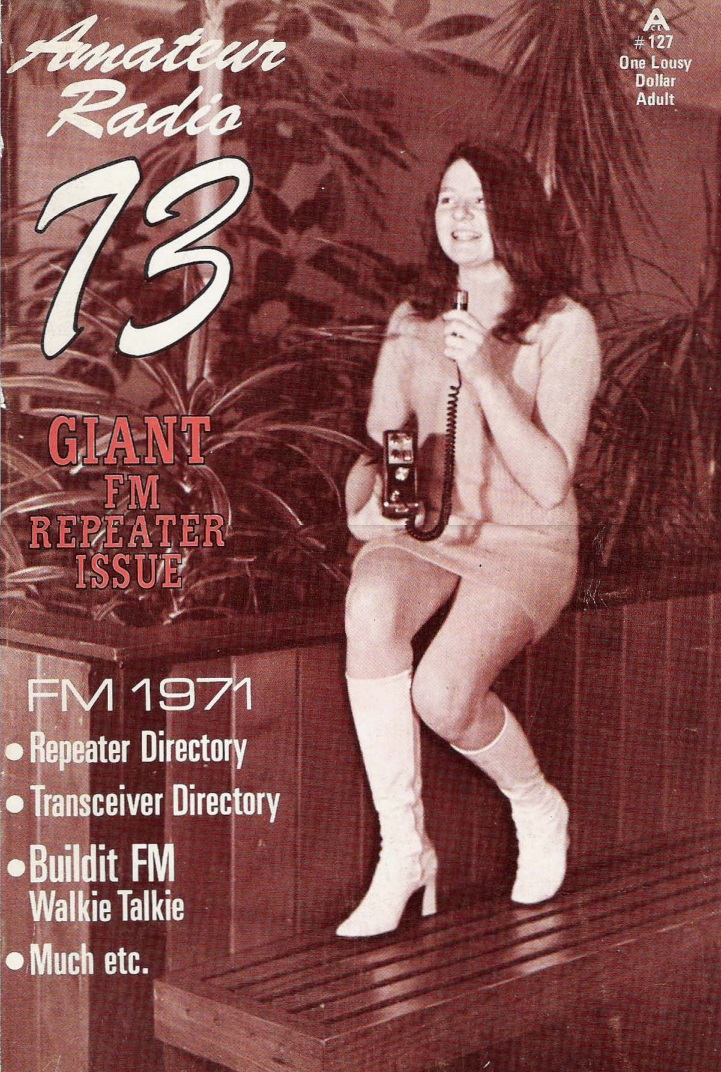 Fifty years ago this month, the April 1971 issue of 73 Magazine was a special issue devoted to FM repeaters. The cover shows Murry Sessions, the daughter of Managing Editor Ken Sessions, K6MVH, at the mike of a Drake TR-22, a one-watt portable 2 meter FM rig with six crystal-controlled channels. According to a review in the magazine, the set retailed for $199.95.
Fifty years ago this month, the April 1971 issue of 73 Magazine was a special issue devoted to FM repeaters. The cover shows Murry Sessions, the daughter of Managing Editor Ken Sessions, K6MVH, at the mike of a Drake TR-22, a one-watt portable 2 meter FM rig with six crystal-controlled channels. According to a review in the magazine, the set retailed for $199.95.
Of particular interest is the nationwide repeater directory, which took up seven pages in the magazine. The 30 kHz channel spacing had been widely adopted, with some channels designated for wideband and others for narrowband. However, there was no uniformity as to repeater inputs and outputs. 146.34 MHz was a very common repeater input, and 146.94 was a common output, but they weren’t necessarily paired. For example, many repeaters were 146.34 input and 146.76 or 146.88 output. In many cases, frequencies were shared in the same area, with different audible burst tones at the start of the transmission.
This makes sense, since crystals were expensive, and using the same frequency for two repeaters would have allowed users to save having to buy an additional crystal. When I got on 2 meters in the mid-1970s, the most common repeater pair was 146.34/146.94 (although this was not used in the Minneapolis-St. Paul area). However, 146.94 was the most widely used simplex channel. My first two meter rig had crystals for .34/.94, but also had a transmit crystal for .94.
In the 1971 listing, Minneapolis had a repeater with an output of 146.46. The “priority input” was 146.34, with a “courtesy input” of 146.94. The magazine noted that this system was in operation 24 hours. Many systems had limited operational hours. The Minneapolis system also had an input on 6 meters, 53.64 MHz.
Two meter FM saw great growth in the following years, fueled partly by the availability of autopatches to allow phone calls to be made from a mobile or portable radio. This continued through the 1970s and 1980s, but waned considerably with the rise of the cell phone. My first two meter radio was a semi-homebrew portable unit with four channels. Around 1976 or so, I bought a Drake TR-22C, the twelve-channel updated version of the one shown above. It was loaded with crystals for popular repeater pairs, which had by then been standardized. Therefore, almost anywhere I travelled with the radio, I was probably within range of a repeater, and it was almost always possible to raise a fellow ham.
